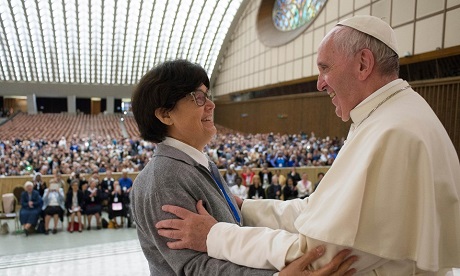The Vatican Commission on Women Deacons meets for the first time today.
The 12-members will study how things were in the early times of the Church.
This will involve finding out how women served as deacons in the early church.
Questions include “were their duties similar to those performed by male deacons” and if so, “were they part of the church’s sacramental identity”?
The Second Vatican Council restored permanent deacons’ role. They may be married or celibate.
In the US, for instance, there are many permanent deacons, who help staff Catholic parishes.
They cannot celebrate Mass, forgive sins or anoint the sick. They can preach, baptize and witness weddings.
Transitional deacons’ position is different. Theirs is a step in the process before ordination to the priesthood.
Women are not allowed to work as ordained clergy in the Catholic Church.
Archbishop Francisco Ladaria Ferrer, Secretary of the Congregation for the Doctrine of the Faith was asked about the Commission’s purpose.
At the time he was giving an address at the Marchigiano Theological Institute of Ancona.
“This study doesn’t pretend to have an ecumenical scope,” he said.
“The desire is to give the Holy Father some elements of judgment and nothing more.
“The Pope has said that ‘this aspect should be studied, especially in the early times of the Church.’”
The Commission is headed by Spanish Jesuit and Archbishop Luis Francisco Ladaria Ferrer.
Ferrer is secretary of the Congregation for the Doctrine of the Faith and secretary general of its International Theological Commission.
Besides Ferrer, the Commission includes six men and six women.
They have a mix of both lay and religious backgrounds.
Ferrer’s International Theological Commission last examined the issue in 2002.
Its conclusion was that the ordaining women to the Diaconate is “up to the ministry of discernment that the Lord has left the Church.”
The Pope has asked the Jesuits to find ways to better integrate discernment into its teaching at seminaries.
Source
Additional reading
News category: World.




